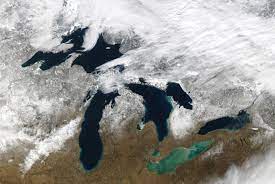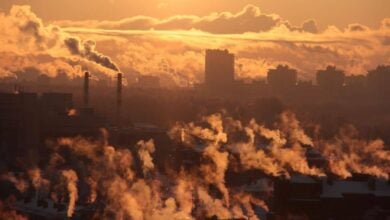Average ice cover of 5 Great Lakes hits record low in 50 years

The National Oceanic and Atmospheric Administration (Noaa) reported that the average ice cover over the five Great Lakes was only 6% last month, making it one of the least icy Januarys in the past 50 years.
The Great Lakes, which include Superior, Huron, Michigan, Erie, and Ontario, are situated near the US-Canada border and form the largest freshwater system in the world, covering a combined surface area of 95,000 square miles.
While some variation in ice cover from year to year is normal, scientists attribute the recent decrease to global heating, which is causing warmer water temperatures and rapid ice loss. If no action is taken soon, it is predicted that a significant number of lakes may stop freezing in winter and some may permanently lose their ice cover by the end of the century.
Lake Superior alone holds over half of the Earth’s freshwater and has seen a 25% drop in basin-wide ice cover since 1973. This trend of declining ice cover is causing various environmental and societal impacts, including increased evaporation rates, warmer water, lower oxygen levels, and disruptions to the food chain.
The decrease in ice also affects cultural and recreational activities in the region, such as ice fishing, dog sledding, and outdoor skating. Additionally, it has implications for industries like tourism and commercial shipping.





